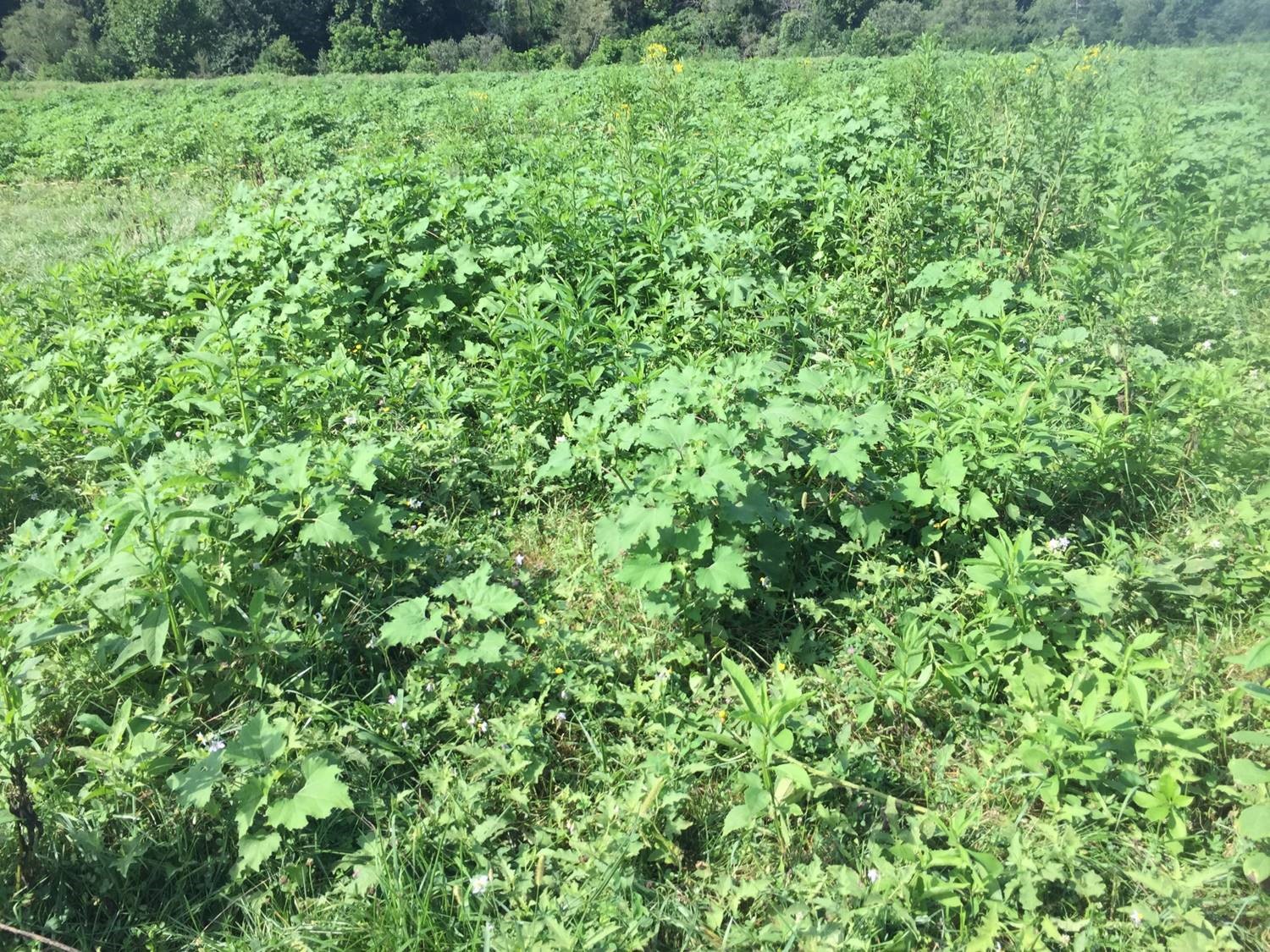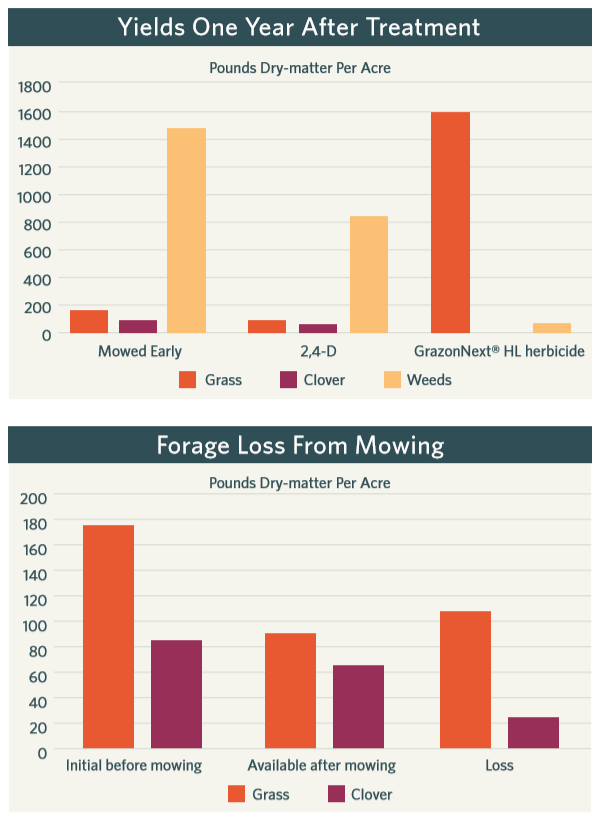Even late, a better option grows more forage
As a rule of thumb, you grow more grass by spraying weeds early in the growing season. But, life happens and spraying doesn’t always get done early. So, what’s the cost-effective weed control option then?
As a rule of thumb, you grow more grass by spraying weeds early in the growing season. But, life happens and spraying doesn’t always get done early. So, what’s the cost-effective weed control option then?
Dealing with pasture weeds later in the summer could be a reaction (e.g., “Those weeds are worse than I thought”), or it may be by design, says Pat Burch, a Range & Pasture field scientist with Corteva AgriScience™, who is based in Virginia.
For producers concerned about keeping clover in their pastures, summer mowing or spraying a light rate of 2,4-D have been two options. Mowing by itself should have little effect on clover. The herbicide 2,4-D usually injures the clover it hits, but the clover does recover.
GrazonNext® HL herbicide at recommended rates will provide superb weed control, but will take clover out for at least a year.

In a two-year study, Burch looked at all three options in a weedy corner of southwestern Virginia pasture. Weeds included chicory, cocklebur, dandelion, fleabane, horsenettle, plantain and wingstem. In July 2016, he established replicated plots to demonstrate:
In July 2017, he took samples from each plot for yield data one year after treatment. The original mowed plots he also mowed again. Cattle were excluded from grazing for one month prior to sampling to allow the site to recover.
Burch offered some observations a year after treatment:
Mowing in the second year opened the weed canopy, but it removed 50 percent of the grass and 25 percent of the clover in the process.
In the mowed plots, weeds continued to outcompete grass and clover. A year later, weeds made up 85 percent of the total biomass, grass 10 percent and clover 5 percent. Total forage (grass and clover) per acre tallied 266 pounds.
The 2,4-D plots had fewer weeds than the mowed plots, but half the grass and 72 percent of the clover. Weeds made up 85 percent of the total biomass, grass 9 percent and clover 6 percent. Total forage per acre: 152 pounds.
Plots grew almost nine times more grass when sprayed with GrazonNext® HL herbicide than the mowed plots. Weeds made up less than 5 percent of the total biomass, grass 95 percent and clover less than 1 percent. A small amount of clover was starting to come back. Total forage per acre amounted to 1,594 pounds.
Plots sprayed with GrazonNext HL yielded nearly six times more total forage (grass and clover) than the mowed plots and 10 times more forage than the 2,4-D plots.

Is your goal to support cows? If you’re faced with a weedy pasture, you’ll grow more forage using better weed control, even if you have to sacrifice the clover for a year.
Think in terms of days of grazing. For simple math, consider a 1,000-pound cow consuming 2.5 percent of her body weight per day. At 50 percent grazing efficiency, the mowed acre a year after treatment with no other inputs would support a cow for five days. Sprayed with GrazonNext HL, that acre hypothetically would support her for 31 days.
Label precautions apply to forage treated with GrazonNext HL and to manure from animals that have consumed treated forage within the last three days. Consult the label for full details.
®™Trademarks of Dow AgroSciences, DuPont or Pioneer and their affiliated companies or respective owners. GrazonNext HL is not registered for sale or use in all states. Contact your state pesticide regulatory agency to determine if a product is registered for sale or use in your state. State restrictions on the sale and use of Remedy Ultra apply. Consult the label before purchase or use for full details. Always read and follow label directions.
Learn about seasonal opportunities, rancher success stories, and management strategies for pastures and rangeland.